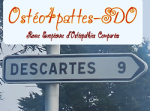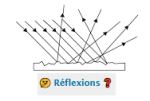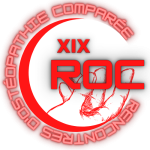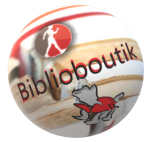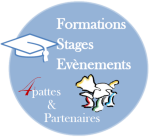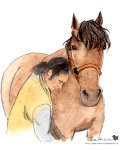- INTRODUCTION, p1
- SUBJECTS AND EQUIPMENTS, p1
- METHODS, p1
- TEST, p1
- ANALYSIS, p1
INTRODUCTION
The seat of the rider is the determinant of the relationship between horse and rider [46].Quality of this relationship depends in part on communication and performance in dressage horse rider combination(Greve L, Dyson S, 2013) [53]. The quality of posture and balance jumper influence his seat(Swift, 1985) [9]. The rider’s body is a balance more or less used which may affect the performance of the animal (Licart, 1989) [10]. An imbalance or disorder of posture will sound on the quality of the link, thus the performance. Osteopathy is a manual medicine concerned with posture and balance of the person [38]. To what extent this manual medicine helps to maintain and improve the link quality [3] (Chêne, 2009). Is there a convenient and reliable way to qualify and / or quantify this seat ?
Rider’s seat in standing position and dynamic in “balancier global” is a pertinent method for healthy riding. All the tested riders used this pattern to realize the sound and the canter test. (Galloux et al, 1997. [37]
The canter is an asymmetrical movement composed of one left and one right. (Deuel & Lawrence, 1987) [56] "Laterality in the gallop gait of horses" shows on four horses quarter horse, the difference in duration of contact between the canter and gallop right to left in the same horse. They have chosen the most naturally gallop on the left foot than on the right foot.Horses anointed asymmetrical locomotion. They borne curved left or right.
No prior study with “clergerie” simulator and quantification of the seat’s riders has been done.
The first issue is to find an effect of osteopathic treatment on the quality of the posture of the rider’s seat.
The second issue is to determine whether the test can be done a remarkable simple criteria objectification and practical to implement in order to determine the quality of the seat of the rider. We will need to know the repeatability and reproducibility.
A canter sound simulator pretest was validated by 16 experimented riders. Six test measures right gallop and gallop left were performed to evaluate the repeatability in the same session. After analysis by the Shapiro-Wilk test for small sample, it appears a non-normal distribution. S-W [0.94162, 0.85960] and P [0.01885, 0.36936]. This requires us to analyze our variables by nonparametric tests. Friedman ANOVA and coefficient of concordance Kendal have been used to assess repeatability and reproducibility of our test (p> 0.05). This allows us to use this test to set up our study on the simulator.
SUBJECTS AND EQUIPMENTS
Study with 28 experienced riders distributed into a treated and an untreated control group
GROUPE A GROUPE B
| age | height | weight | gallop | prat | age | height | weight | gallop | prat | |
| 26,36 | 169,29 | 63,86 | 6,5 | 18,57 | average | 33,71 | 166,07 | 66 | 6,86 | 17,5 |
| 6,222 | 8,052 | 9,599 | 0,52 | 6,085 | standard deviation | 14,45 | 7,5495 | 12,16 | 0,53 | 9,859 |
| 21 | 155 | 53 | 6 | 10 | mini | 20 | 157 | 50 | 6 | 5 |
| 44 | 185 | 90 | 7 | 33 | maxi | 55 | 184 | 90 | 8 | 40 |
Equestrian simulator “clergerie” by Peteris Klavins, working with an electric rotary motor (Kw 0370 with a maximum input current 4.2 A) capable of operating at a frequency of 0 to 100 Hz, adjustable frequency potentiometer brand Leroy Somer. This rotary motion is converted into the same frequency oscillating movement by means of an articulated arm which allows it to provide the rocking horse. This rocking motion is seen in the sagittal plane, vertical and anterior-posterior direction. During test, frequency is 70 Hz stable. The assembly is absorbed by a compression spring set distributed along the axes X, Y, Z in order to allow movement in all planes.
Video camera HP 485, 30 ips
Kinovea software for video analysis
METHODS
• 3 tests per performance
• 3 performances test/retest/retention test
• Parameters
o device’s proper sound
o swings differential
o effort perception
TEST
Minimum session of conditioning experiment for all riders :
– Frequency 70 cycle / min.
Sitting trot be soft and limp recovered in overall balanced 5 minutes
5 minutes sitting trot up and down the legs, remove, release.
5 minutes sitting trot forward thrust of the pelvis on 10 strides alternating with experience
– Frequency 90 cycle / min.
Sitting trot and trot up alternating 5 minutes calipers
– Frequency 70 cycle / min.
Down the buttock in the saddle from the shoulder, alternating with 5 for 5 minutes.
Completion of movement of the canter 5mn.
On the machine it is defined as a clockwise rotation (galloping left) or counterclockwise (gallop right) movement of the pelvis. P Galloux et Al. (Programme Persival, 1995) [63] observe that "The top view is a broad ellipse that widens the side of the foot where the horse gallops." At first free practice right and left, then test leads if necessary.
Once this period is completed we can pass the entire test.Frequency of the machine cycle at 70 / min for all.
Instructions :
– Head straight
– Fixed shoulders
– Deep in the saddle
Same for every rider after laying markers preset :
– 2 minutes slouched sitting trot / global balance
– 2 min sitting trot up and down the legs
– Sitting trot, each buttock down a dozen times
– Left 4 canter strides, 4 strides and right 4 times each specific test once in rehearsal to ensure understanding.
Specific test :
– 10 canter stride right (counterclockwise rotation)
– Trot a few strides
– Galloping stride 10 left (clockwise)
Resting on a trot in sudden release for 3 minutes to recover.
Learning the test 3 times.
ANALYSIS
During canter, the movements of vertebral ripples are asymmetrical in the horizontal plane. Thus, galloping right, only normally produce bends the neck left and bends the back right. These movements tend to form an inverted S galloping right and S galloping left. These movements in the horizontal plane for the horse result in movements in the frontal plane for the rider, these are accurate movements that we analyze.


